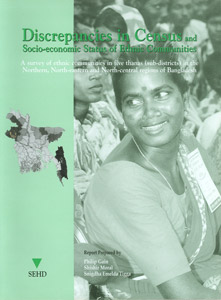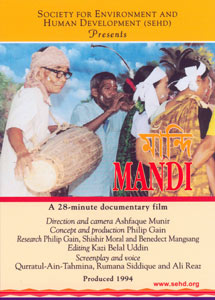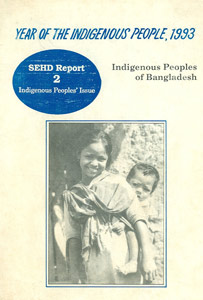
Discrepancies in Census and Socio-economic Status of Ethnic Communities
Analysis of the discrepancies in the census of ethnic communities.
2000, English, 73 pages, Paperback | Tk.150 / US$5
Undercounting of the Adivasis of Bangladesh, grouped in at least 27 communities, is an often-heard complaint. The survey of the Society for Environment and Human Development (SEHD) substantiates this complaint. According to the SEHD survey on the Adivasis in five thanas (sub-district) the margin of error in the government population census of 1991 has been found to be 14.89%.
The five thanas covered under the survey are Bhaluka in Mymensingh District, Jhenaigati in Sherpur District, Kamalganj in Moulvibazar District, Ghoraghat in Dinajpur District, and Godagari in Rajshahi District. The survey was conducted from November 1996 to March 1997.
The ethnic communities found in the five thanas are Santal, Monipuri, Oraon, Koch, Garo, Rajbangshi, Munda, Khasi, Paharia, Hajong, Mahato, Tripura, Chakma, and a few other smaller communities.
According to the 1991 census, the total ethnic population in five thanas was enumerated at 43,219, which was 4.8% of the total of 8,98,485 people. If an average population growth is estimated at 2% per annum from 1991 to 1997, the ethnic population in the five thanas would have been 48,403 in 1997. But the SEHD findings in 1997 recorded the ethnic population in the five thanas at 56,872 indicating a margin of error by 14.89%. However, the margin of error is not uniform in all thanas. In Bhaluka the margin is 55.68%, which is 26.96% in Jhenaigati, 18.52% in Kamalganj, and 5.64% in Ghoraghat. The margin of error in Godagari was found to be a negative one [with 2.78%].
The survey also exposes important information about socio-economic conditions of the Adivasis such as their literacy, land question, access to common property, safe drinking water and other necessities.
The SEHD findings recommend that the government authorities responsible for official census take note of the discrepancies in the official census that the SEHD survey has identified so that such discrepancies are eliminated. The SEHD findings also suggest that generation of further information about numbers and socio-economic conditions through study, research, and analysis will play a key role in understanding the Adivasis of Bangladesh.
Publication Details
Published: 2000
Language: English
Paperback: 73 pages
Editors: Philip Gain, Shishir Moral & Snigdha Emelda Tigga
Price: Tk.150 / US$5


